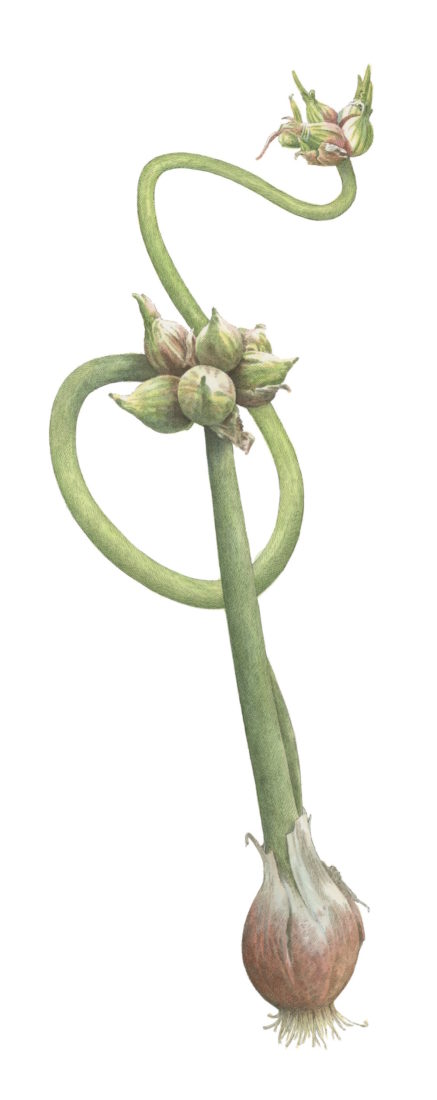The best way to reach Blackberry Farm’s master gardener, John Coykendall, is to call his wife’s cell phone. “Her business card says, ‘Keeper of the Seed Keeper,’ and that’s accurate,” he says. Seed Keeper is a title Coykendall has aspired to since childhood. He pulled his first potato from the Tennessee dirt at age eleven. A few years later, in 1959, he discovered a tattered copy of a 1913 William Henry Maule seed catalogue, and his garden-guru calling took hold. “I loved gardening and art, and so all of those beautiful illustrations of these varieties, from tomatoes to pumpkins to onions, held a huge fascination for me,” says Coykendall, who is also a classically trained artist and has traveled the world collecting and discovering long-forgotten seeds. One of the plants in that catalogue was the walking onion (also known as the tree onion), now one of his favorite varieties to plant in the acclaimed resort’s Walland, Tennessee, gardens. In the early 1900s, it was a go-to pickling onion, but it got knocked off its pedestal by the pearl onion. “It’s one of those things we refer to as functionally extinct,” he says. “It exists, but most people don’t know it’s available.” This topsetting onion “walks.” After the plant sends out green stalks up to three feet tall, bulblets sprout atop the stalks. Eventually the tops slump over, and their bulblets touch the ground, sending down roots and beginning a new growth cycle. When Coykendall delivers the one-and-a-half-inch red bulbs to Cassidee Dabney, Blackberry’s executive chef at the Barn restaurant, she most often uses them in a soup or for pickling. “The soup is definitely a guest favorite,” Dabney says, “and very easy to make at home.” Grab some walking onions this spring and they’ll keep for a couple of months if stored in a cool, dry place. They may be hard to find, but Coykendall hopes to change that. “There’s this renaissance of rediscovering old foods like this, ones with great flavor,” he says. “I preach the seed gospel. It’s my job to get these things out there and get people knowledgeable so they’ll say, ‘I want some of those in my backyard.’”
THE CHEF RECOMMENDS:
Onion Soup with Pickled Onions
Yield: 6 servings
INGREDIENTS
6 cups walking onions, sliced (can substitute Vidalia onions)
5 sprigs thyme
12 tbsp. butter, melted
Salt and pepper, to taste
2 cups vegetable broth, warmed
Pickled pearl onions (recipe follows)
Croutons, for garnish
PREPARATION
Preheat oven to 325°F. In an oven-safe dish, coat onions and thyme in melted butter and season with salt and pepper. Roast, covered, for 30 minutes until onions are soft and translucent. Remove thyme. Puree onions in a blender until smooth, slowly adding vegetable broth until mixture reaches desired consistency. Check and adjust seasoning. Ladle into bowls and top with pickled pearl onions and croutons.
Pickled pearl onions:
Bring ¼ cup water, ¼ cup white wine vinegar, and ¼ cup sugar to a boil in a saucepan. Place 6 peeled and quartered pearl onions in a heat-proof jar, and carefully pour the hot vinegar mixture over them. Let cool to room temperature, cover, and refrigerate. They’ll keep for up to a month.
Tip: Grow your own. Buy a bunch of walking onions to plant ($13, southernexposure.com), and watch them multiply.








